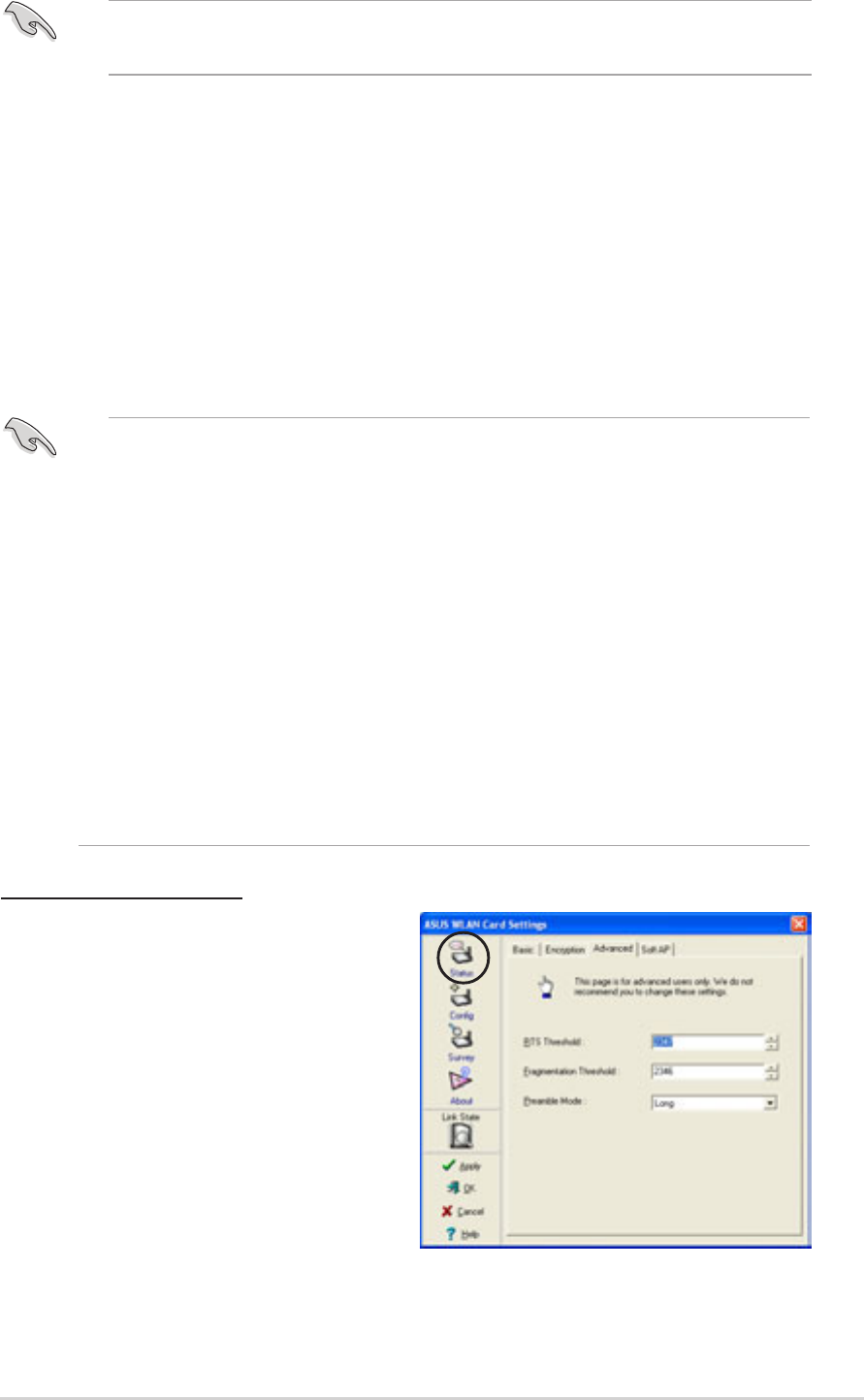
69
ASUS Terminator 2 barebone system
All wireless clients in a network must have identical WEP keys to
communicate with each other or with an access point.
Two ways to assign WEP keys
Manual Assignment. For a 64-bit encryption, enter 10 hexadecimal digits
(0~9, a~f, A~F) or 5 ASCII characters in each of the four WEP keys. For
128-bit encryption enter 26 hexadecimal digits (0~9, a~f, A~F) or 13 ASCII
characters in each of the four WEP keys.
Automatic Generation. Type a combination of up to 64 letters, numbers,
or symbols in the Passphrase field. The Wireless Settings utility uses an
algorithm to generate four WEP keys based on the typed combination.
Config - Advanced tab
The Advanced tab displays the
wireless LAN adapter advanced
settings. It is recommended that you
keep the default settings for optimum
performance.
• 64-bit and 40-bit WEP keys use the same encryption method and
can interoperate on wireless networks. This lower level of WEP
encryption uses a 40-bit (10 hexadecimal digits assigned by the
user) secret key and a 24-bit Initialization Vector assigned by the
wireless LAN adapter. 104-bit and 128-bit WEP keys use the same
encryption method.
• After assigning the WEP keys, click APPLY to save and activate
the encryption. Manually assigned encryptions are more secure
than automatically generated encryptions.
• Use Manual Assignment instead of Automatic Generation if you are
not sure whether other wireless clients use the same algorithm as
that of wireless LAN adapter.
• Keep a record of the WEP encryption keys.


















